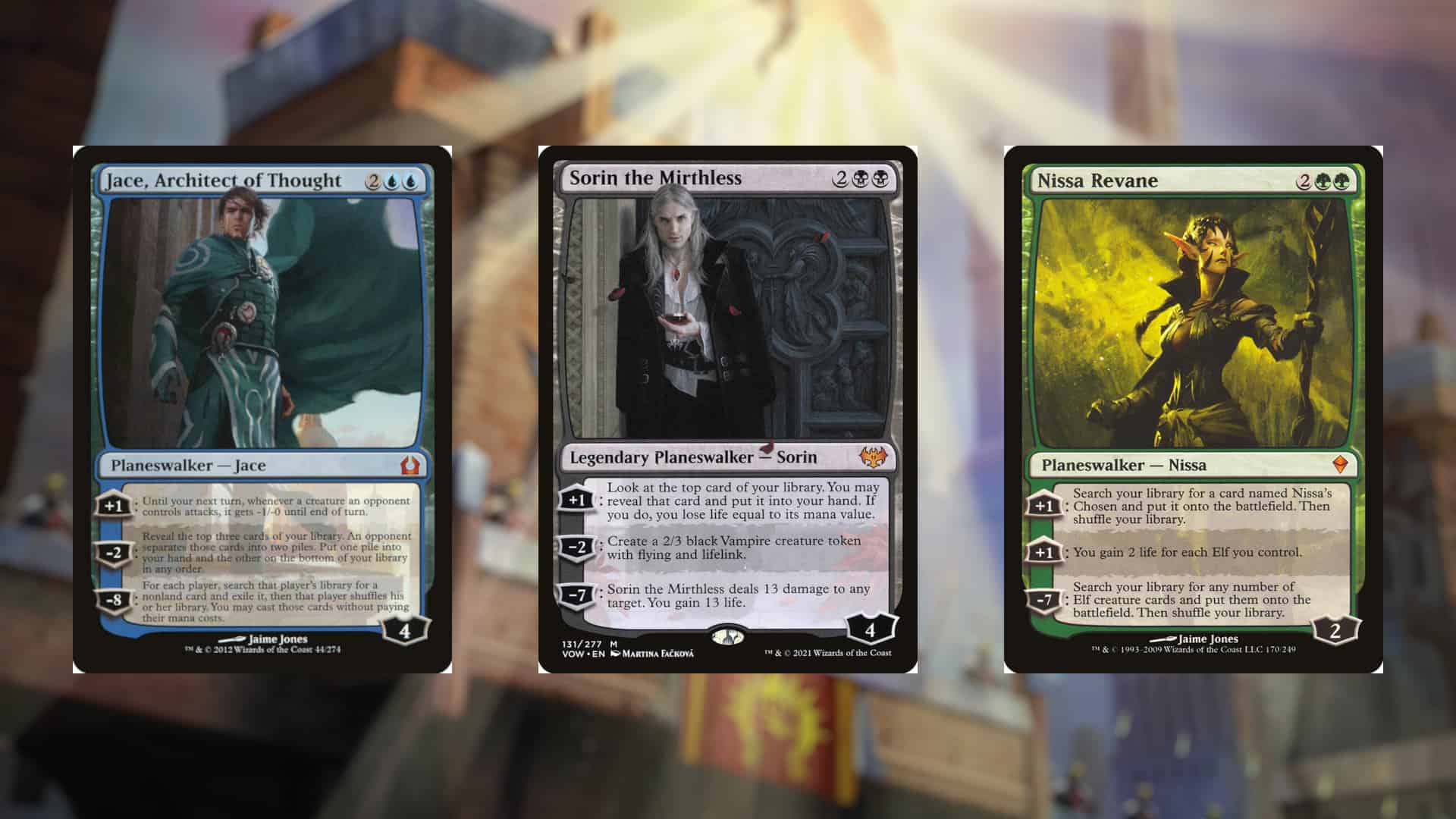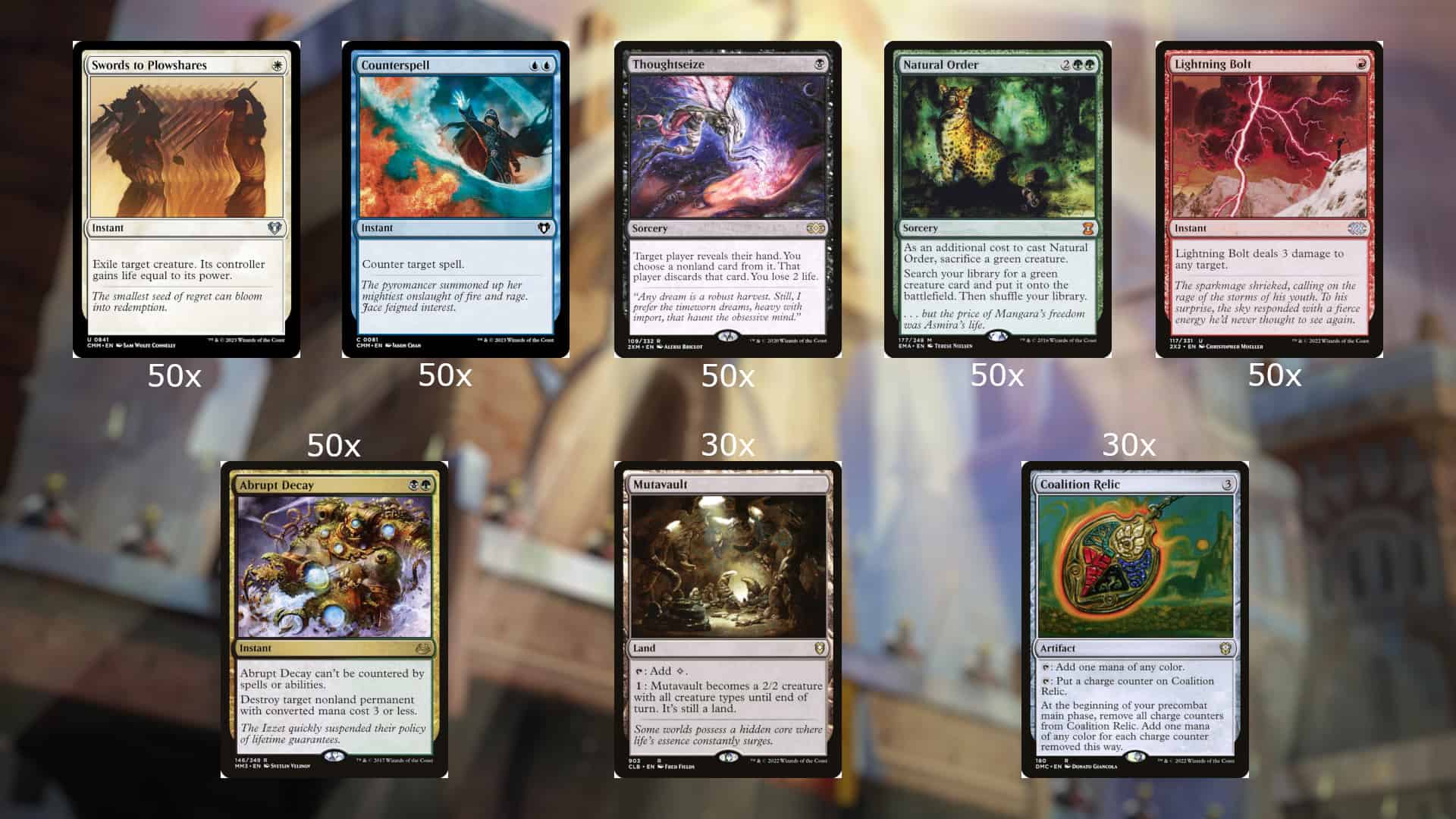Video Gamer is reader-supported. When you buy through links on our site, we may earn an affiliate commission. Prices subject to change. Learn more
Magic: the Gathering is a game with a storied history. There’s been so many different ways to play the game. While Commander may be Magic’s most popular format, one of the most beloved formats that flies under the radar is Cube. Playing cube is a beautiful representation of game knowledge and deck building skill, but building your own cube is even more fun. So we’re going to over how to build a cube in Magic: the Gathering.
How to build a cube in Magic: The Gathering
We’re going to talk through what a cube is, and show you the steps and concepts to building your very own cube to play with your friends. Since Cube is a draft format, if you’ve never done a draft before, then check out our how to draft in Magic: the Gathering guide. With that, let’s talk get Cubing!
What is a Cube in MTG?
A Cube is essentially a curated set of Magic cards from any of Magic’s set. Typically, a cube will have a set or mechanic behind it. Some examples of this include Powered or Vintage Cube, or MTG Arena’s Arena cube. But cube themes can take on many forms, so we’ll give a few suggestions as well of some fun cube ideas that you could build yourself.
How to pick the right number of cards for your cube in Magic: The Gathering
The first step in our how to build a cube guide is to pick how big you want your cube to be. It may seem like a very simple decision to make, but having the right number of cards could make the job of planning out the cube easier or harder. There’s typically a few ways you can go about deciding this. A cube should be a minimum of 360 cards. This is exactly enough cards to create three packs of 15 cards for eight drafters. This will ensure that every single card in the cube gets used.
We recommend starting with a 360 card cube if you haven’t built one before. Going this way has its benefits. When every card in the cube gets used, any combos and synergies that you plan for the cube will for sure show up in the packs to be drafted. But at the same time, if every card gets seen in every draft, then the draft and play experience lacks diversity after a little while.
Another way to go is to use 540 cards. The benefit to having 540 cards in your cube is that there’s more diversity in the card packs, at the cost of a consistent draft experience. There’s 50% more cards in the cube so some of the planned strategies may never be realized in any give draft. At the same time, this can breed some interesting takes on your strategies that you didn’t plan for.
The last way is going with a 720 card cube. This is a lot more work to put together, but can ultimately result in a highly replayable experience. This is ideal for cubes that have a larger, more general overall theme.
Picking a cube theme

The next thing you’ll want to do is consider a theme. The theme can be whatever you want it to be and that’s where the fun comes in. You can build around different worlds or blocks, such as a Ravnica Cube, an Innistrad Cube, or any of the other planes that we’ve visited in the game.
The other way to go is to pick a theme based around a mechanic, theme, or even a format. One of the most fun cubes that I’ve ever played was a Commander cube, where everyone drafted three possible Commanders, and then drafted cards from a huge card pool to build a 60 card commander deck. These are just a few sample ideas, so whatever interests you, you could probably make a cube around it.
Keep in mind though, that if your cube’s theme or idea is narrower in scope, you may need to go with a 360 card cube, rather than a 540 or 720 card.
Balancing and managing your cube

Once you’ve decided on a theme and size for your cube, it’s almost time to start adding cards. First, you’ll want to make sure that you balance your cube so that every color / combination has an equal number of cards in it. For a 360 card cube, here’s a rough breakdown of how many cards you should have in each category:
- 50 white cards
- 50 blue cards
- 50 black cards
- 50 red cards
- 50 green cards
- 50 multicolored cards, with five of each color pair
- 30 non-basic lands
- 30 colorless artifacts
If you end up with 540 cards, you’ll ideally even distribute 18 cards between every category, and an extra card into the single colors and either an artifact or land. For the multicolored cards, you’ll end up with an extra card per pair, and the remaining eight cards could be tri-color cards or you could distribute those eight cards to other places.
One of the things that we’d recommend is using a cube building managing website like Cube Cobra or even Google Sheets to help maintain the list of cards in your cube. With this many cards, things can get out of hand pretty quickly.
Picking archetypes and balancing power
Before we actually add any cards to our cube list, a great way to help narrow down our picks is to take the color pairs and assign an archetype to each one. By doing this, you’ll narrow your search criteria down to cards that can fit into those archetypes. By breaking things up, you’ll end up with a list of cards before you know it. You’ll want to make sure that some of the cards can work in other archetypes that share colors, but that shouldn’t be too big of a worry if you have all the archetypes selected ahead of time and laid out as you pick cards.
The other thing that you’ll want to do as you’re picking cards is keep in mind the power level of the cards that you’re adding to your cube list. It’s best to not have any one color or combination stronger than the others. Unfortunately, you’ll have to do some gut checks on cards as you go. Any cards that you’re unsure of how they will perform, definitely take note of them and keep an eye out for them while you’re doing the next step, playtesting.
Playtesting
Testing your cube with friends is the best way to really balance your cube. Getting repetitions of both draft and playing will give you some real info about how the cards in your cube are performing. You’ll have to keep track of some performance over a good number of drafts, but you’ll end up figuring out which cards that you’ll want to change out. Not to mention, that new sets come out all the time and so you should never have any trouble finding cards to replace under or overperformers.
And that’s how you build a cube! Again, these are some general principles that you can use to build your first cube, and as you get more familiar with the process, you can build some wild and exciting cubes. Don’t forget that if you are unable to playtest with people in person, you can still build a cube and test draft on something like Draftmancer, and play games on Spelltable.
